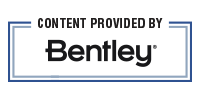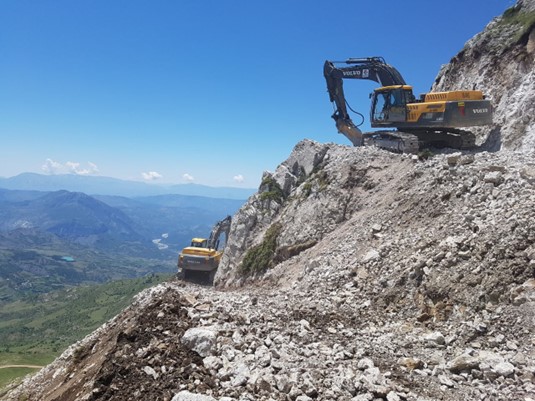
Technological advances in construction have been changing the way almost everything gets done. As projects continue to grow larger and more complex, construction teams are implementing digital strategies to drive productivity, transparency, and significant cost savings.
A key part of this strategy is prioritizing digital field-to-office technology and workflows that increase efficiencies throughout the construction lifecycle.
But do not take our word for it. We recently talked with industry experts Tannis Liviniuk, president of Trillium Advisory Group, and Grant Puttergill, director of project controls at Zachry Group, about the benefits of digital field to office technologies, as well as digital workflows and best practices in more detail. Here are some of the insights they shared with us.

Tannis Liviniuk, President, Trillium Advisory Group
Bentley Systems: Tannis, tell us a little about yourself.
Tannis: I started my career in the crane and heavy lift industry, working in the field on construction projects for a family business. Over time, I progressed into industrial projects, advancing into planning and coordination roles.
Throughout my career, I had the opportunity to hold positions in project capacities, as well as in corporate roles, which led me to found Trillium Advisory Group in 2018 and join forces with Zachry Group in 2021. Trillium provides advisory services for digital project delivery, including BIM, digital twins, data analytics, data services, strategic services, and best practices related to advanced work packaging, lean construction, and constructability.
Bentley Systems: Grant, tell us more about your experience and background.
Grant: I am a true global citizen, following megaprojects all around the world. Originally from South Africa, I began my career in quantity surveying. After university, I moved to the United Kingdom and provided project management consultancy for major projects. From there, I moved to Australia and was involved in the LNG pipeline station megaproject. Later, I moved back to Europe, where I assisted with a major transatlantic gas pipeline project, consisting of 3,500 kilometers of pipeline. Eventually, I joined Zachry Group, supporting their energy projects, and moved to the United States working at the jobsite in Texas.

Grant Puttergill, Director Project Controls, Zachry Group
Bentley Systems: What are the major challenges on large, complex projects?
Tannis: Teams face a variety of challenges, including:
Poorly structured project contracts.
When contracts are not well structured, they can create a challenging operating environment and lead to unnecessary complexity as teams attempt to navigate project expectations in real time.
Aggressive schedules and optimism bias.
Sometimes teams go into projects with the best-case scenario in mind. This mindset can create issues if you are not thinking about likely risks and how you are going to mitigate them.
Talent shortages.
We have a construction labor shortage in the United States, and a significant percentage of the current construction workforce is anticipated to retire in the next 10 years. This is a global challenge and something that technology can help us navigate.
Supply chain complexity.
There are so many parts and components coming from multiple countries and various suppliers. Gaining visibility into it all can be quite difficult, but without visibility, planning and execution become even more challenging.
Lack of common technology.
A lack of a common technology ecosystem and/or operating and data environments can create substantial challenges. If everyone is operating in their own siloed ecosystem, then there are multiple versions of the truth, which makes collaboration incredibly difficult.
Managing and trusting construction data.
The industry used to have challenges with data collection; now, it has challenges with an influx of data. The difficulty in managing data is one that teams are really struggling to navigate because it is not just about generating data, it is about trusting your data.
Not sticking with the plan.
Getting off plan and reacting to situations can create downstream implications regarding activity execution. If you have a solid plan that the team has collaborated on, stick to it.

Photo credit to Zachry GroupPhoto credit to Zachry Group
Bentley Systems: What are the benefits of implementing digital field to office technology on large, complex projects?
Grant: There are so many benefits of implementing digital technology on projects. Some of these benefits include:
Improved team collaboration with digital twins.
Establishing a construction digital twin during the design phase that linked the models to the schedule using SYNCHRO 4D helped improve team coordination and allowed us to run schedule reviews with our colleagues in Texas while sitting in Japan. The digital twin also optimized collaboration and communication, enabling us to make the right decisions at the right time.
Connected teams – from the office to the field.
Other strategies included software implementation to ensure everyone was connected and did not have to go back to the workstation to enter progress and do their timesheets. We wanted to do everything we could to ensure that the general foreman in the field had everything that they needed to perform the work.
Lower installation rates and reduced FTEs.
Implementing time and progress capture was fundamental because it meant that we had an accountability model in place. This saved significant FTEs. In addition, field teams were equipped with up-to-date information packaged on their tablets, resulting in lower installation rates. And lastly, work packaging time was also reduced.
Attract and retain quality talent.
Generally, when people are doing manual data entry, we see a high turnover rate. By adopting digital technology, we attracted a higher level of talent and increased retainment. It is simply a more rewarding job when it is digital.
Accurate records for better claim management.
We never like to talk about claims, but having good quality records, photographic evidence, and progress and time captured becomes incredibly powerful when you can tie it back to the schedule. With digital applications, we have information near real time.

Photo credit to Zachry Group
Bentley Systems: How can organizations overcome change management challenges?
Tannis: I have four areas of advice for how organizations can overcome change management challenges:
Supporting and empowering your people.
If individuals who are leveraging these processes and technologies do not support, adopt, embrace, or use them fully, then the value is limited. So, when it comes to managing change, supporting and empowering people is critical to success, whether you are changing a workflow or the use of an application, or deploying a brand new application.
Creating business and project strategic priorities.
Spend time strategizing on business and project priorities. Map out workflows to determine where technology is going to create the biggest impact. Organizations are highly complex ecosystems with many moving parts. The same is true with projects, so building a technology stack that is going to support and service the needs of the individuals that are involved is incredibly important.
Being patient and listening actively.
Sometimes teams will roll something out and expect everyone to celebrate, as well as adopt and embrace the change. It is usually not that simple – unless you are rolling out free cake Fridays! Anything else is going to require some work. Perseverance is key. Do not expect perfection on day one. It takes time. It takes grit. It takes support and a lot of active listening.
Taking time to strategize technology deployment.
When you have a rapid delivery project, sometimes teams feel like they do not have the opportunity to sit down and strategize the deployment of digital workflows or the overall architecture of the technology ecosystem on a project. But skipping this step makes everything difficult downstream. Take the time to get this right.

Bentley Systems: What are best practices and lessons learned for implementing digital technology?
Grant: Two of my biggest lessons learned and best practices are:
Gaining leadership and stakeholder buy-In
The implementation must be driven from the top down. It is extremely important to have high-level stakeholder buy-in.
Building trust within the project team
Some people fear having so much data available. But it is an open book test – if there is an issue, you are able to talk about it and solve it. We have a traffic report with red and green lights. We say to wear that red traffic light like a badge of honor because if you know about an issue as a team, then you can all help to mitigate it.
Click here to listen to the full ENR webinar about how you can transform your projects with digital field to office workflows. For more information about SYNCHRO, visit this webpage.

